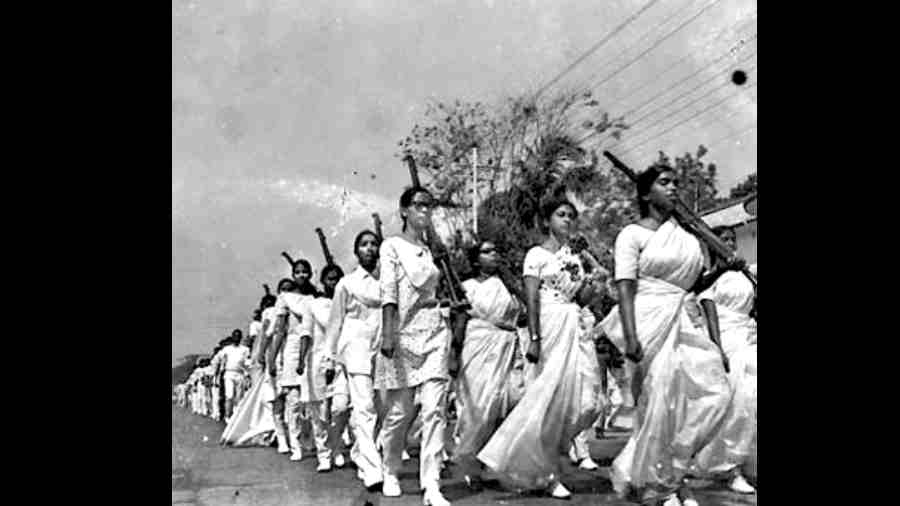The Platinum Jubilee Jute Mill stands on the banks of the Bhairav in Khalispur near Khulna town in Bangladesh. In one of its boilers, freedom fighters and ordinary citizens of the then East Pakistan were roasted alive by Pakistani soldiers and their local henchmen.
The victims were forced into sacks, which were shoved into the boiler. No fewer than a hundred Bengalis suffered the ghastly termination. Visiting the remains of this boiler in the 1971 Genocide Torture Archive and Museum in Khulna today, it’s hard to suppress a shudder.
The genocide museum, established on May 17, 2014, received financial assistance from Sheikh Hasina’s government but is a people’s initiative, led by the academic Muntassir Mamoon and his associates.
On another floor of the museum, one witnesses the Martyrs’ Gallery. Just three days before the Pakistani forces’ formal surrender in Dhaka, the cream of the Bengali intelligentsia was ruthlessly slaughtered by Pakistani soldiers and their local collaborators, the Al Badr and Al Shams militias.
Selina Parvin, writer and editor of the magazine Shilalipi, was dragged out of her home in Dhaka, blindfolded and put to death. The genocide museum displays the pen she had employed against the marauders and the last sari she wore.
The ophthalmologist Alim Chaudhuri, who had treated the freedom fighters day and night, had his eyes plucked out before he was murdered. His medical equipment — forceps, scissors, syringes, cotton pads and lamp — are exhibited.
On the night before the December 16, 1971, surrender, members of Al Badr implemented their programme of eliminating renowned Bengali scholars, thinkers and creative artists.
They picked up the brilliant academic Munir Chaudhury, novelist Shahidullah Kaiser and BBC correspondent Shahid Nizamuddin and murdered them after brutal torture. The Martyrs’ Gallery displays the last panjabi worn by Munir, the personal diary of Shahidullah and the coat of Shahid.
Among the others assassinated were great scholars and teachers like Gobinda Chandra Deb and Jyotirmoy Guhathakurta.
The museum exhibits the blueprint for genocide prepared by Lieutenant General A.A.K. Niazi, Pakistan’s military commander in East Pakistan. It was procured with a lot of effort.
The typed, three-page blueprint, preserved in a glass case, concentrated on two themes: (i) Eliminating Bengali intellectuals and (ii) “Impregnating” Bengali women so that a new and “pure” Muslim-Bengali race can be created.
The genocide museum also records the defiance, resistance, rebellion and bravery of the freedom fighters. For example, it preserves the microphone over which Bangabandhu Sheikh Mujibur Rahman delivered his historic March 7 address, where he declared that “this struggle is the struggle for freedom; this fight is the fight for liberation”.
The battle was waged by common villagers as well. They resisted the might of the Pakistani army with homemade weapons — barbed spears, swords and knives — in the villages dotting Khulna district.
When one observes these weapons, hung from the walls of the museum, one is reminded of Mujib’s exhortation in his March 7 address: “Convert each and every home into a fortress, resist and fight with whatever you have in hand.”
Some of the exhibits encourage the visitor to introspect on the “cruel birth of Bangladesh” (in words used by the American writer and diplomat Archer K. Blood).
One such exhibit is an impassioned letter written to Mujib by a commoner giving the names of those killed, kidnapped or missing. Yet another is a message written by the Prime Minister of the then Provisional Government of Bangladesh, Tajuddin Ahmed, to his wife. This message was inscribed on the reverse side of a packet of the then popular cigarette brand, King Stroke, just before Ahmed left to form his government in Mujibnagar.
Over the last eight years, the genocide museum has organised three international conferences and 11 national seminars on genocide and the Liberation War. It has introduced academic courses for researchers on the cruelty perpetrated and the history of the Liberation War. It has built up a library of 6,000 books and an electronic archive of 6,000 photographs relating to the Liberation War.
Above all, its researchers and volunteers have penetrated every corner of Bangladesh and are unearthing mass graves and killing fields. In short, it is rediscovering the tragic and brave past so that present and future generations learn how the war was won and what kind of hell their forefathers had to go through.










